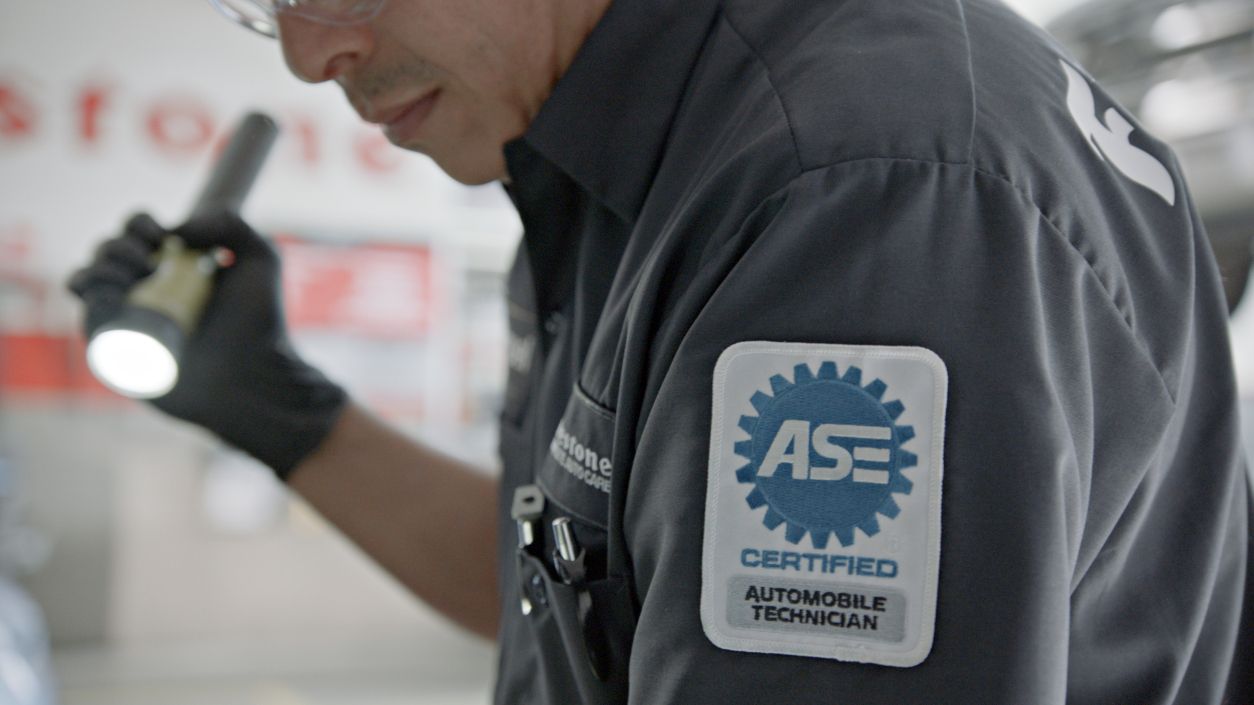From visiting friends and family to crossing kooky roadside attractions off your bucket list (World's Tallest Thermometer, anyone?), there are plenty of reasons to hit the open road this summer. But skyrocketing gas prices have many drivers sweating over their summer vacation plans. Stay cool and collected with these tips for saving fuel on your next road trip.
Before You Leave
There are steps you can take to save on fuel for your road trip before you even hit the road. As part of your road trip prep list, be sure you’ve caught up on vehicle maintenance, planned out your route, and considered the load you’ll be carrying.
Schedule an appointment at your local Firestone Complete Auto Care for help with any repairs or your Manufacturer Suggested Maintenance Schedule. We can also perform a comprehensive Complete Vehicle Inspection to help ensure your vehicle is ready for your road trip.
Catch Up on Vehicle Maintenance
One of the best ways to save gas on a road trip is to make sure your vehicle is ready to handle the task of driving hundreds or thousands of miles. Your vehicle will perform its best and have the best gas mileage when it’s well maintained. Items you should check before a road trip include:
Tire Pressure: Your tires should always be properly inflated, but it's crucial when trying to save fuel. Underinflated tires are one of the top causes of poor gas mileage.
Tire Tread Depth: Low tire tread puts you at risk of punctures and blowouts. To help make sure you stay safe during your road trip, check that your tread is above 2/32 of an inch.
Battery: An aged battery can spell trouble on any long trip, especially with high temperatures affecting your battery's lifespan. Double-check that your battery is charged and ready to go.
Filters: A clogged fuel filter can negatively impact your fuel economy. You also want to check your cabin air filter to help keep the air inside your vehicle breathable.
Fluids: Aside from fuel, your vehicle relies on many other fluids to run properly. Take time to ensure you have enough wiper fluid, transmission fluid, power steering fluid, brake fluid, coolant, and oil. If you’re close to due for an oil change, you may want to get that taken care of before your long trip.
Windshield Wipers: Even if you’re driving through sunny states, you never know when an unexpected rainstorm might hit. Check that all your wipers are in good condition to maintain a clear view of the road regardless of the weather.
Plan Your Route Ahead of Time
Idling in standstill traffic is one of the easiest ways to waste gas. Try to plan as much of your route as possible to avoid rush hour traffic in more populated areas. You can try to time your trip around rush hour or plan alternate routes that may be more efficient. Keeping a map app running can also help you stay on the most efficient route in case of accidents, construction, or other traffic jams.
Planning your route can help you work out your fuel stops, too. Wondering how to calculate gas mileage for a road trip? Multiply your vehicle’s miles per gallon by its fuel capacity to estimate how many miles you can get out of your tank. Gas mileage can vary, so plan stops when you expect to be at around a quarter tank. Running out of fuel can not only leave you stranded, but it can wreak havoc on your vehicle.
Researching gas prices in the towns you plan to stop is also a good move if you want help estimating fuel costs for road trips.
Lighten Your Load
The heavier your car is, the more fuel it’s going to burn. While you’ll need some luggage, snacks, and other gear to fully enjoy your road trip, you should unload anything from your vehicle that isn’t absolutely necessary, like that heavy baseball equipment that’s been sitting in your trunk for months. You should also be thoughtful when packing your bags and avoid bringing more than you need.
While on The Road
Once you’re on the road, there’s more you can do to help save big on gas. Being mindful of your driving habits and carefully choosing where you fill up the tank can have a significant impact in the long run.
Use Cruise Control When Possible
Constant acceleration and deceleration can burn more fuel. When able, you should activate the cruise control to maintain a continuous speed. Speed itself can also affect fuel efficiency, and most vehicles will experience decreased fuel mileage above 50–60 miles per hour. The faster you go over this speed, the more fuel you’ll burn. When you have an open road in front of you or other drivers are speeding, it can be tempting to put more pressure on the throttle pedal. Using cruise control can help you maintain a good speed for your vehicle’s fuel economy.
Keep Your Windows Up
You’ve heard the A/C burns fuel, which might lead you to believe rolling down the windows will help you to save on fuel. But driving with windows down can be worse for your gas mileage than the air conditioning.
Your vehicle is designed to be aerodynamic, and rolled-down windows can create wind resistance. This wind resistance can work against your vehicle, causing it to burn more fuel. When driving at highway speeds, opt for the A/C instead.
Carefully Choose Your Gas Stops
Even when you’re getting the most gas out of your tank, you still don’t want to spend more at the pump than absolutely necessary. Fuel stations along the main highway tend to be more expensive, so don’t stop at the first one you happen to see. Instead, use a gas price comparison app or website to find the best deal.
If you find yourself in an area with ridiculously high fuel prices no matter where you go, consider partially filling your tank and waiting until the prices are lower to fill it all the way.
Get Ready for Your Summer Road Trip with Firestone Complete Auto Care
Ready to embark on your next summer adventure? Make sure your vehicle is ready for the road ahead by ensuring that maintenance issues will not cost you extra money at the pump. Stop by your nearest Firestone Complete Auto Care for a free vehicle inspection today!



